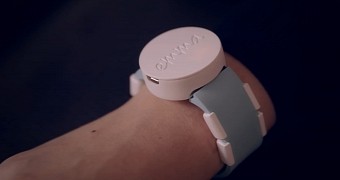Microsoft researcher Haiyan Zhang offered one of the most emotional moments on the first day of the Build developer conference when she appeared on stage together with Emma Lawton, a 33-year-old graphics designer suffering from Parkinson’s disease who managed to write her name on a piece of paper after years of struggle, all thanks to a prototype smartwatch.
A video presented by Microsoft during the opening keynote highlights Emma’s story, who found out she was suffering from Parkinson’ disease in her late 20s.
Due to hand tremors, Emma was no longer able to even write her own name on a piece of paper, much less draw.
Although there’s no cure for Parkinson’s disease, the brilliant mind of Haiyan Zhang helped develop a device that could assist people suffering from this disorder to manage and control tremors in a way that would give them the chance to perform typical daily activities, such as writing.
After meeting Lawton, the Microsoft researcher started working on a device that would help counter the hand tremors using sensors and artificial intelligence whose purpose would be to monitor the symptoms and then send signals to the brain in order to reduce the tremors.
The Emma Watch
Zhang explains in the videos published by Microsoft that it spent months studying Parkinson’s disease, and after creating several prototypes using development boards, she managed to design the so-called Emma Watch, a smartwatch that generates vibrations on the wrist.
The smartwatch analyzes the wearer’s symptoms and then vibrates using a personalized rhythm that’s created using AI and the built-in sensors. These vibrations trick the brain into focusing on the wrist, reducing the signals that are sent to muscles and generating the tremors.
The watch is still in prototype phase, but the Microsoft researcher says it’s been tested on four different individuals and the results were encouraging for three of them.
The next step is to improve the device with help from a neuroscience team in the United Kingdom and to conduct researches on more people suffering from Parkinson’s disease. Though there are plans for the device to be mass produced at some point, there are no specifics on this.

 14 DAY TRIAL //
14 DAY TRIAL // 
